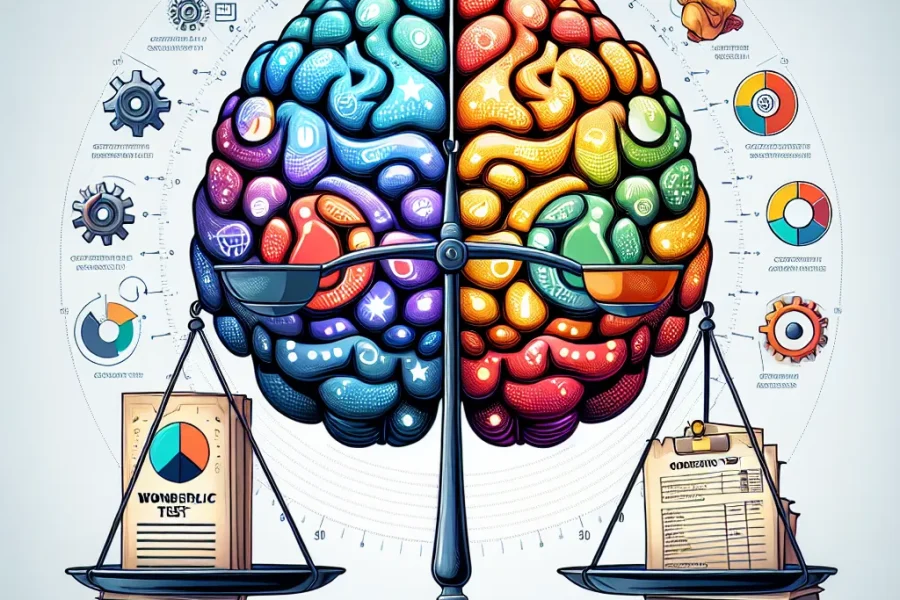The History And Evolution Of The Wonderlic Test
The Wonderlic Test stands as one of the most influential and enduring cognitive assessment tools in history. From its humble beginnings in the 1930s to its current status as a sophisticated digital assessment platform, this revolutionary test has shaped how we evaluate human potential across numerous fields. Today, it continues to evolve with modern technology while maintaining its core purpose of measuring cognitive ability efficiently and accurately.
If you are looking for an excellent iq test, see our IQ Test
When Eldon F. Wonderlic introduced his groundbreaking test in 1936, he revolutionized the field of psychological assessment. Drawing inspiration from pioneering psychologists like Alfred Binet and Lewis Terman, Wonderlic created something uniquely practical: a cognitive assessment that could be completed in just 12 minutes. This innovation came at a crucial time when businesses and institutions were seeking more scientific approaches to evaluation.
What set Wonderlic’s creation apart was its focus on measuring ‘general mental ability’ (GMA) in a way that was both comprehensive and efficient. Unlike the lengthy IQ tests of the era, the Wonderlic Personnel Test (WPT) offered a rapid yet reliable assessment of cognitive capability, making it immediately attractive to organizations seeking to streamline their evaluation processes.
The test’s early adoption in educational settings quickly expanded into the corporate world, where its practical applications became immediately apparent. By the 1940s, companies across America were incorporating the Wonderlic Test into their hiring protocols, recognizing its value in identifying candidates with strong cognitive abilities and problem-solving skills.
The test’s sophisticated design incorporates questions that evaluate multiple intelligence dimensions, including logical reasoning, mathematical aptitude, and verbal comprehension. This comprehensive approach has made it particularly valuable in fields where quick thinking and analytical skills are crucial, such as healthcare, technology, and emergency services.
The test gained significant credibility during World War II when the U.S. Naval Academy adopted it for admissions screening. This military endorsement demonstrated the test’s reliability in identifying individuals capable of performing under pressure and handling complex technical information – qualities that remain relevant in today’s fast-paced professional environment.
Perhaps one of the most well-known applications of the Wonderlic Test comes from professional sports, particularly the NFL. Since the late 1970s, the test has been a standard component of the NFL Scouting Combine, where it helps teams evaluate prospects’ mental acuity. Recent years have seen increasing scrutiny and discussion around NFL Wonderlic scores, though the test remains a valuable part of the evaluation process.
The digital revolution has transformed the Wonderlic Test’s administration and scoring processes. Modern test-takers often complete the assessment online, receiving instant results through sophisticated scoring algorithms. This technological evolution has made the test more accessible while maintaining its rigorous standards.
Recent developments include the introduction of advanced analytics and machine learning algorithms that enhance the test’s accuracy and predictive capabilities. The current version incorporates sophisticated item response theory and adaptive testing mechanisms, ensuring a more precise measurement of cognitive ability across different skill levels.
Contemporary research continues to validate the Wonderlic Test’s effectiveness. Studies conducted at major universities have consistently shown strong correlations between test scores and various measures of professional and academic success. This ongoing validation has helped maintain the test’s position as a trusted assessment tool in an era of increasing scrutiny of standardized testing.
Today’s Wonderlic, Inc. offers a comprehensive suite of assessment tools that extend beyond cognitive testing. Their modern platform includes personality assessments, skill-specific evaluations, and customized solutions for various industries. The company has embraced data analytics and artificial intelligence to provide more nuanced insights into candidate potential.
Looking ahead, the Wonderlic Test continues to adapt to changing workplace demands and technological capabilities. Recent updates have focused on reducing cultural bias, improving accessibility, and incorporating modern psychological research findings. The test now includes options for remote proctoring and enhanced security measures, reflecting the growing trend toward digital assessment in a post-pandemic world.
The Wonderlic Test’s evolution from a simple paper-based assessment to a sophisticated digital platform mirrors the broader transformation in how we measure and understand human potential. As workplace demands continue to evolve and new technologies emerge, the Wonderlic Test remains at the forefront of cognitive assessment, adapting while maintaining its fundamental purpose: providing quick, reliable insights into human cognitive capability.




Leave a Comment